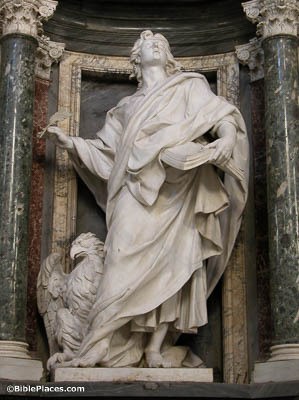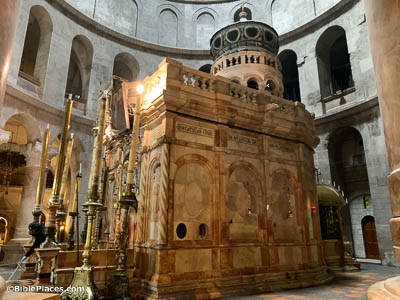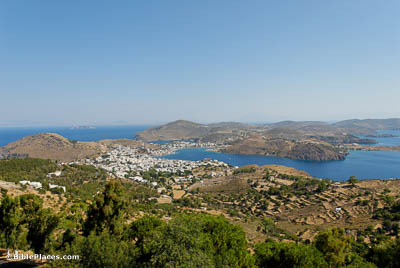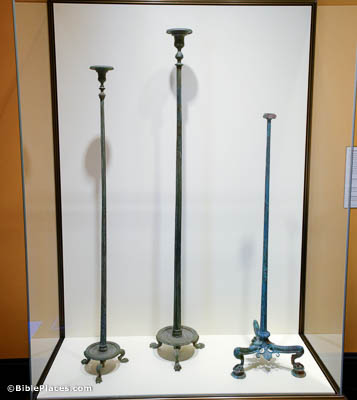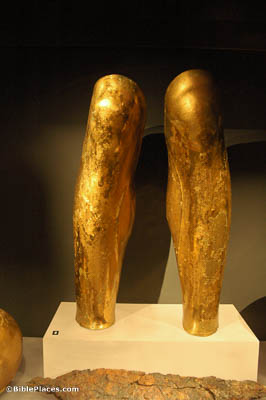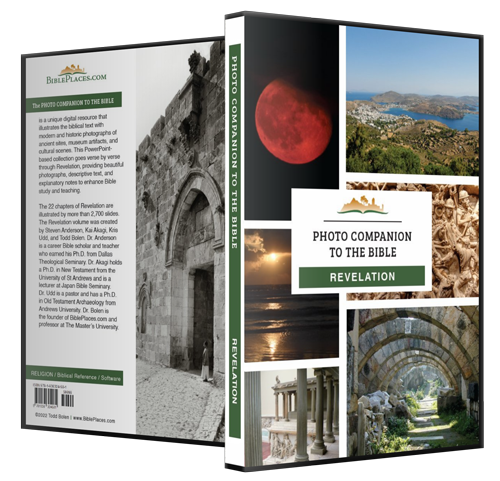He sent and made it known by His angel to His servant John (Revelation 1:1).
John is here depicted with an eagle, which is the symbol of both the apostle and his Gospel (taken from Rev 4:7). Depictions of John as the “beloved disciple,” as here, typically show him as a beardless youth, while depictions of “John the theologian” show him with a long white beard and a receding hairline. This statue from the Archbasilica of St. John Lateran in Rome appears to depict John seeing a vision and writing the book of Revelation.
